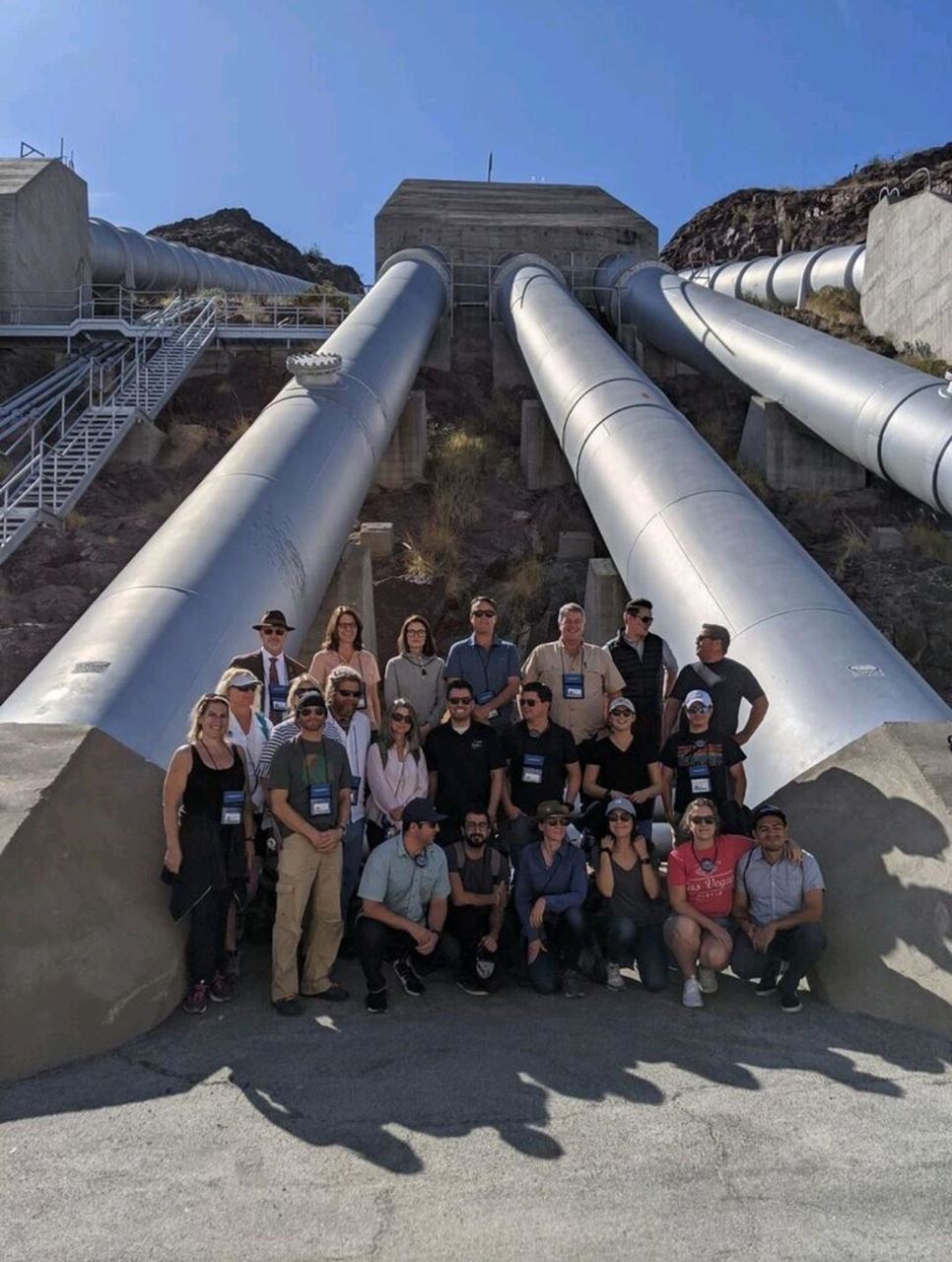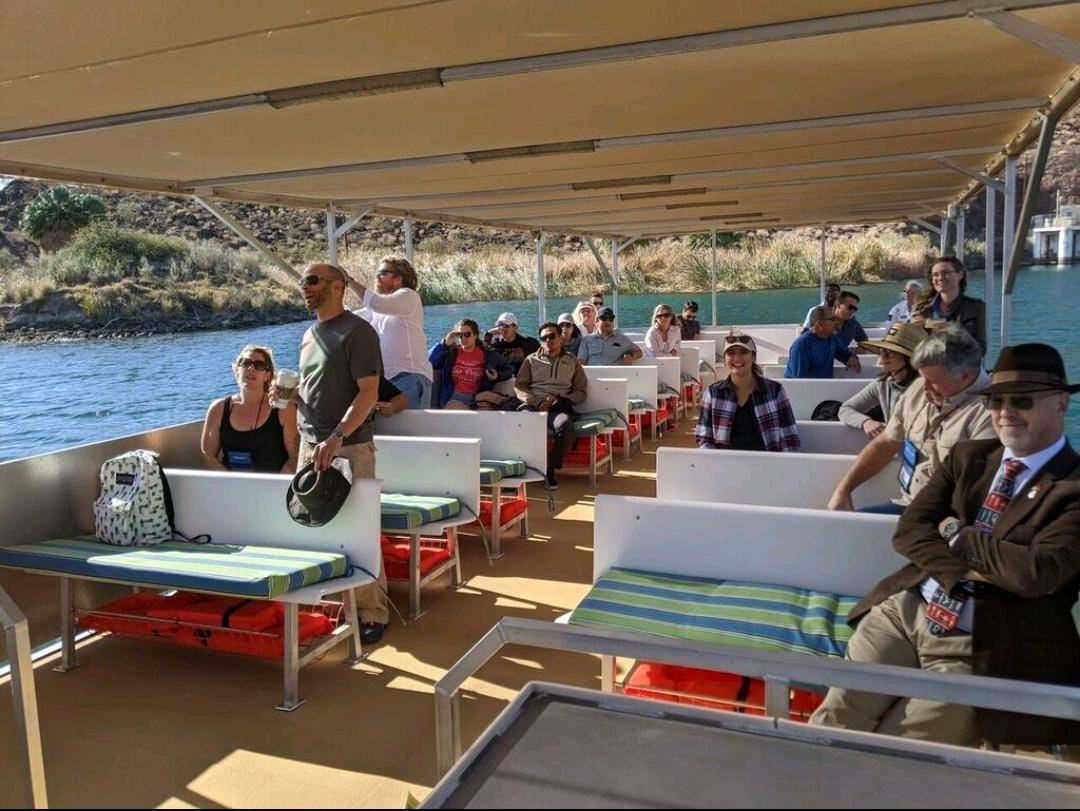
The Ladera Rancho Chamber of Commerce had the pleasure of following the marvelous journey water takes en route to Orange County – and what an amazing journey it is! The trip was hosted by the Metropolitan Water District of Orange County and Director Larry McKenney over the course of three days from November 15th – 17th. (Did you know you may be drinking water from Wyoming when you open your tap?).
We had the opportunity to view many of the infrastructure elements that have essentially enabled humans to settle, populate and grow the economic powerhouses of Las Vegas, San Diego, the IE and Orange County. None would be possible without the ability to store water and then to distribute that water in very complicated ways.
We picked up the journey at the Hoover Dam (did you know its name was changed?), a true engineering marvel, particularly when you consider it was built almost 100 years ago during the depression. But that’s only part of the story because water then travels through several other dams, including Parker Dam that provides half of the hydroelectricity necessary to lift the water to the aqueduct. From there, water snakes through another 242 miles and terminates at Lake Mathews, where it is purified and sent to our houses!
Places viewed: Lake Mead, Hoover Dam, Gene Camp, Copper Basin, Parker Dam, Whitsett Pumping Plant, Lake Havasu, Palo Verde Irrigation District, HayDay Farms, Patton Museum
Thirty representatives from organizations all over the state participated, coming from as far away as Westlands Water District in Fresno – it was a great group and everyone was eager to learn and collaborate!
Some of our take-aways from the trip:
- The storage of water is THE element that enables us all to live where we do.
- Most people have no idea of the Herculean effort it takes to bring high quality drinking water to their taps - but it is important to have some understanding.
- Population growth and climate change pose significant challenges to the continued sustainability of the system.
- The way water is distributed to stake holders throughout the system is complex and requires more legalese than we have (did you know that the doctrine of Prior Appropriation regulates water rights in the West?).
- Adding to water supplies in the future will be different than in the past and will have to include more conservation efforts, storage and greater water reclamation.
- The availability of water is directly tied to Economic Growth.
- We only drink 1% of the water that is delivered to our homes. (did you know that tap water is higher regulated than bottled water and usually better quality?).


